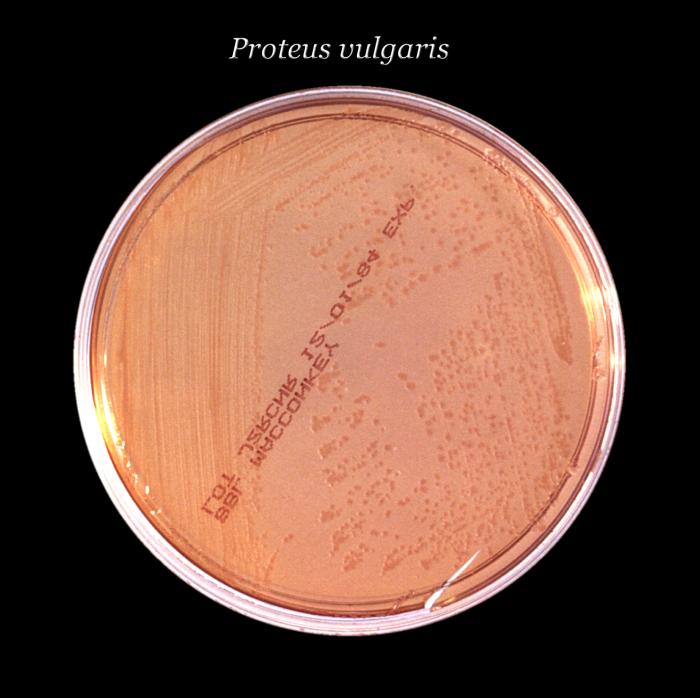- Proteus (bacterium)
Taxobox
color = lightgrey
name = "Proteus"

image_width = 240px
image_caption = "Proteus vulgaris " growth inMacConkey agar culture plate
domain=Bacteria
phylum =Proteobacteria
classis = Gamma Proteobacteria
ordo = Enterobacteriales
familia =Enterobacteriaceae
genus = "Proteus"
genus_authority = Hauser 1885
subdivision_ranks = Species
subdivision = "P. mirabilis" "P. morganii" "P. penneri" "P. rettgeri" "P. vulgaris" etc."Proteus" is a genus of
Gram-negative Proteobacteria , which includespathogens responsible for manyhuman urinary tract infection s.cite book | author = Guentzel MN | title = Escherichia, Klebsiella, Enterobacter, Serratia, Citrobacter, and Proteus. "In:" Barron's Medical Microbiology "(Barron S "et al", eds.)| edition = 4th ed. | publisher = Univ of Texas Medical Branch | year = 1996 | id = [http://www.ncbi.nlm.nih.gov/books/bv.fcgi?rid=mmed.section.1472 (via NCBI Bookshelf)] ISBN 0-9631172-1-1 ] "Proteus" species do not usually fermentlactose , but have shown to be capable lactose fermenters depending on the species in aTSI test, Triple Sugar Iron. Since it belongs to the family of "Enterobacteriaceae ", general characters are applied on this genus: It is oxidase-negative, but catalase- andnitrase -positive. Specific tests include positiveurease (which is the fundamental test to differentiate "Proteus" from "Salmonella ") andphenylalanine deaminase tests. On the species level,indole is considered reliable, as it is positive for "Proteus vulgaris " but negative for "Proteus mirabilis ". Some species are motile.cite book | author = Ryan KJ; Ray CG (editors) | title = Sherris Medical Microbiology | edition = 4th ed. | publisher = McGraw Hill | year = 2004 | id = ISBN 0-8385-8529-9 ]Pathogenesis
Three species—"P. vulgaris", "P. mirabilis", and "P. penneri"—are opportunistic human
pathogen s.References
Wikimedia Foundation. 2010.
